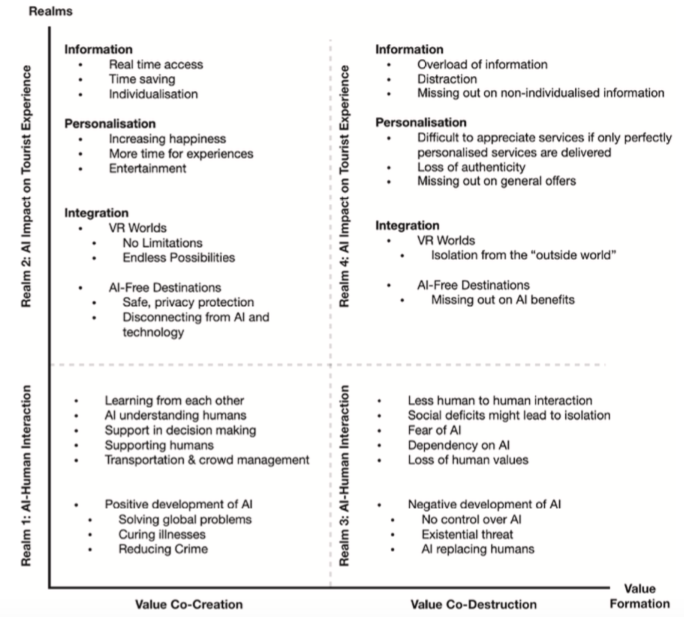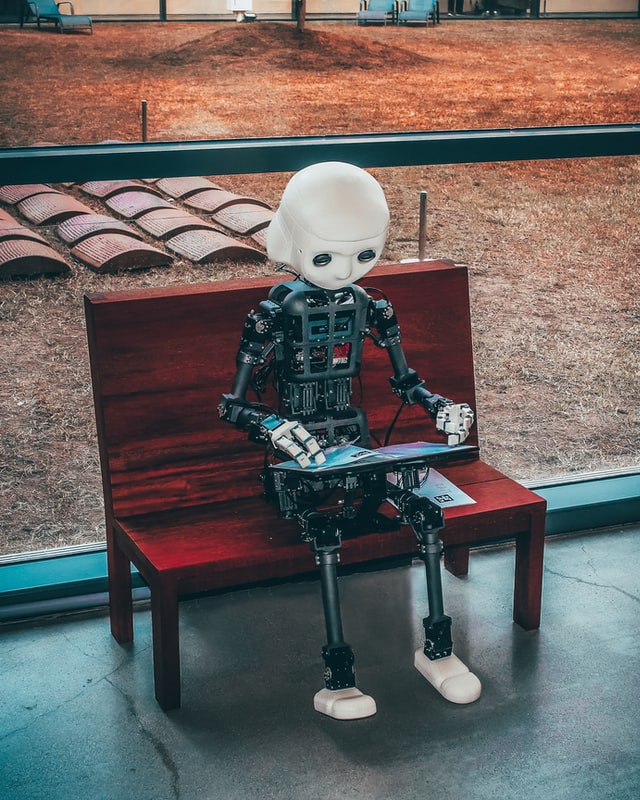Like every other form of technology, artificial intelligence (AI) has its pros and cons; however, the notion of to what extent AI, specifically, may contribute to or take away from tourist destination experiences in the future remains unclear. In a new study on the bright and dark sides of AI in the future, Grundner and Neuhofer (2021) proceed to examine and explain this phenomenon further.
“Intelligence can be seen as the ability to solve complex goals, understand emotional knowledge and apply logic.”
One may wonder about how smart AI truly is- can it really do all of the above and beyond? Will it eventually surpass human intelligence? Although applications of AI are often overlooked or considered “normality”, they can be seen almost everywhere through physical, virtual, or holographic modes. Take Apple’s Siri or Amazon’s Alexa as an example, or what about the customer service you received via a chat-bot while online shopping the other day? Technology and AI surrounds us in our daily lives, and, although mainly positive situations have emerged, the negative aspects of AI must also be taken into consideration and implemented into various fields of research.
AI in tourism and technology-enhanced experiences
The tourism industry has been turning to technological resources and information and communication technologies (ICTs) to a greater extent in order to “make services more efficient and to create experiences that are more personalized and relevant to the tourist in relation to their social and mobile situation”. Furthermore, AI can increase efficiency and productivity (through the reduction of service costs), safety and security, and when it comes to smart destinations, AI can also support decision-making processes and navigate tourists. In this way,
AI has the potential to transform tourist experiences.
This hybridization of both physical and virtual aspects throughout a customer’s journey has led to so-called technology-enhanced tourist experiences.
Bright and dark sides of AI
Naturally, a large majority of previous literature surrounding this topic has focused more so on the pros of AI rather than on the cons; however, value formation can occur in both positive (value co-creation) and negative (value co-destruction) forms. On the bright side, AI has shown value co-creation via robots, chat-bots, and automation in the tourism ecosystem. Nonetheless, the idea of humans and machines co-creating experiences alongside each other still needs to be understood and embraced further. On the other hand, the dark side of AI and co-destruction has been revealed through instances such as job loss, unsatisfied employees and customers, privacy and security issues, decline in social interactions, and negative developments of superintelligence.
Superintelligence refers to “a form of AI that surpasses human capacity in every aspect”.
‘What is’ to ‘what could be’- findings and results
This study applied the theoretical lens of the service-dominant (S-D) logic and used a futures wheel method to “explore the impact of AI on the tourist destination experience and uncover its positive and negative value”. Furthermore, it fast-forwards to the year 2025 in order to have a closer look at AI’s impact in the future. As a result of this research, a new theoretical model known as The Realms of AI Tourist Experiences came to light. This four-dimensional model, which can be seen in Figure 1 below, consists of two axes (i.e. (1) Value Co-Creation and (2) Value Co-Destruction) and two realms (i.e. (1) AI Impact on Tourist Experience and (2) AI-Human Interaction) within each axis.

Figure 1. The Realms of Tourist Experiences model.
By using statements to further explain the themes and results of the model in a narrative-like style, this study provides an understanding of AI through the participants’ perspective and further explores the split opinions that arose. For example, one participant states the following:
“Social deficits could lead to the fact that people cannot have real conversations or cannot hang out with each other anymore, leading to missing communication among humans.”
On a more positive note, another participant believes that AI is satisfactory enough and that it can even enhance experiences at destinations.
“AI can be used for improved time management. If people go to a destination and have only two days to experience everything, a place with no waiting lines, impacts the experience positively.”
Overall, the model reveals both a bright and dark side to AI’s future growth in which it highlights the need to consider both parties and balance technology and AI within the tourism industry. The study, in general, demonstrates a qualitative approach to AI, leading to several implications for the branches of tourism and destination management.
If you would like to read more about the above-mentioned model as well as the positive and negative aspects of AI and its capability to co-create and co-destroy value in tourist destination experiences, download the full text via:
To cite this article (APA format):
Grundner, L. & Neuhofer, B. (2021). The bright and dark sides of artificial intelligence: A futures perspective on tourist destination experiences. Journal of Destination Marketing & Management 19, 100511. https://doi.org/10.1016/j.jdmm.2020.100511
Picture: Unsplash Andrea De Santis
